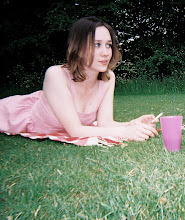Witches and Wicked Bodies
Scottish National Gallery of Modern Art, Edinburgh
27 July - 3 November 2013
by CHRISTIANA SPENS
“The witch is dead, the wicked witch is dead!” – From the
evil witch in The Wizard of Oz, whose
famous chant was re-appropriated by some celebrating the recent death of
Margaret Thatcher, to the costumes worn by children (and adults) on Halloween,
the witch is still very much alive as a figure of nightmares, rebellion and
curiosity in the modern world. Witches and Wicked Bodies, the current exhibition at the Scottish National
Gallery in Edinburgh, focuses on the modern history of that spectre, charting
its artistic representation in the visual arts over the past six centuries.
From Dürer and Goya, to Sherman and Rego, the development of
an archetype is shown in the context of the mainly European artistic movements
and cultural sensibilities that shaped it, not to mention the religious
persecutions and casual sexism and ageism that also contributed to the
construction of the ‘witch’. There are many ways to select pictures of witches
for a show such as this, but given the gothic atmosphere and religious history
of the city, as well as its setting for Macbeth (both in the play itself and
the performance of it countless times each year in the Fringe), it fittingly
focuses on the witch as originally portrayed in Romantic and Gothic drawings
and paintings, often inspired by Shakespeare and other literature. Paintings by
Lucas Cranach the Elder show dark fables and mythologised fear of sexuality and
wild femininity, while William Blake’s “The Whore of Babylon” shows a
monstrosity of Greek mythological proportions. The famous “The Weird Sisters
from Shakespeare’s Macbeth” star witches who look rather more like men than
women, and Agostino Veneziano’s “The Witches’ Rout (The Carcass)” embraces the
morbid and horrific side of the witch narrative, in a gruesome Underworld where
a witch is pulled by a chariot made from a huge carcass.
In most of these representations, the witch represents the
spectre not only of evil, but female
evil – compounding and encouraging a view of rebellious women as wicked and
criminal, and using that myth to explain the otherwise incomprehensible crimes
and unfortunate happenings that were as regular in centuries past as today.
Even in paintings of witches who look masculine, that masculinity is used to
show women without enough femininity, who are therefore supposedly flawed and
‘weird’. It is interesting, when viewing these works, and this behaviour, to
consider the way that socially constructed stereotypes have been used
throughout history to make sense of such ordinary phenomena as illness,
economic problems, death and heartbreak. While the idea of the ‘witch’ tends to
be confined to fairytales and Hollywood movies these days, the tendency to use
a myth or a stereotype to exclude some people from society, and to provide an
easy explanation for ‘bad things happening’, is familiar as ever. Seeing the
way in which artists have contributed to this social behaviour (although some
have also used art to comment on it or criticise it, including Sherman) is
especially fascinating and inspires many questions about the role of art in
social cohesion and division, and the interplay between social assumptions and
artistic portrayal. “Witches and Wicked Bodies” is a fascinating and
provocative exhibition, in its exposition of that relationship between social
stereotype and fine art.

No comments:
Post a Comment